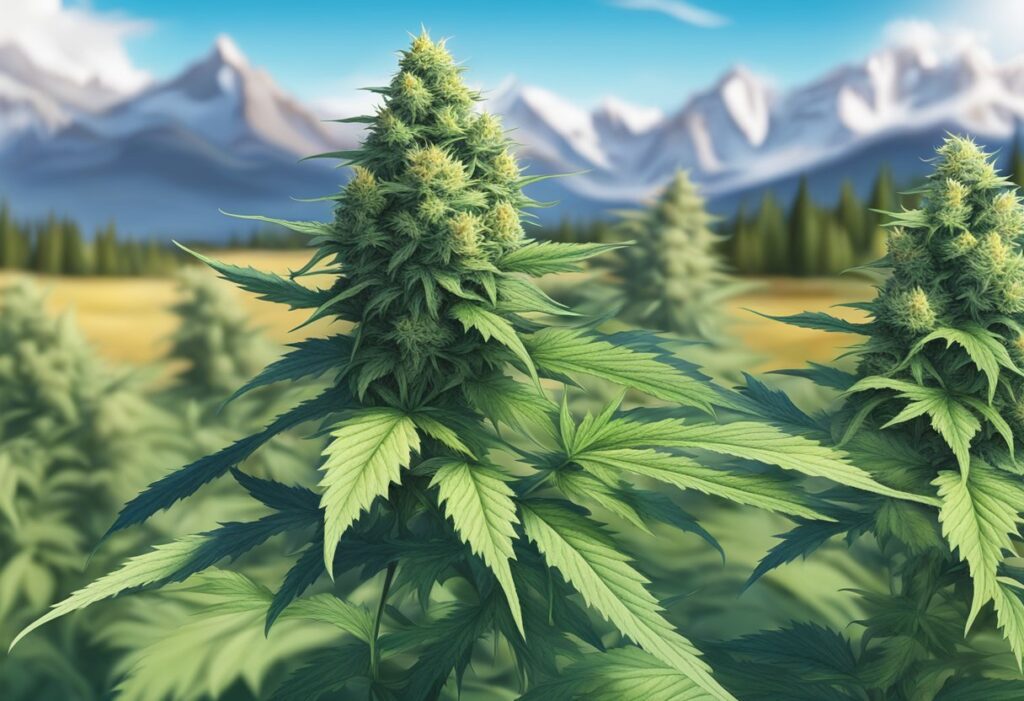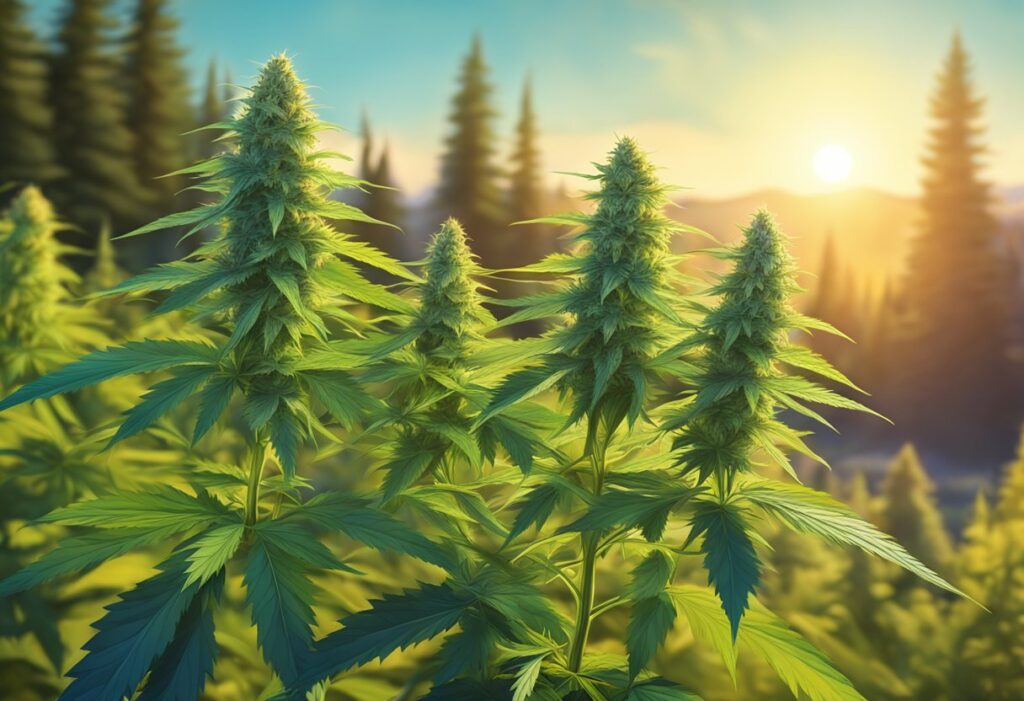
In your quest for a bountiful harvest, comprehending the nuances of autoflowering cannabis and
its growth stages is essential. These unique plants have specific genetic, environmental, and care requirements that set them apart from their photoperiod counterparts.
Autoflowering cannabis strains possess genetics from Cannabis ruderalis, a species known for its hardiness and ability to flower based on age rather than light cycle. Typically, autoflowers begin flowering within 2-4 weeks post-germination, independent of light changes. This genetic trait enables continuous growth and rapid life cycles, making multiple harvests within a single season possible.
Unlike autoflowers, photoperiod strains require specific light schedules—usually 12 hours of light and 12 hours of darkness—to initiate and maintain their flowering stage. Autoflower strains, on the other hand, don’t depend on a change in the light cycle to start blooming. This makes autoflowering strains more suitable for you if you’re seeking a straightforward cultivation process with potentially faster yields.
When growing autoflowering cannabis, it’s important to prioritize the environment to maximize your plant’s potential. Here are some specific parameters:
By understanding and catering to these aspects, you’ll be well on your way to cultivating healthy autoflowering cannabis plants.

To maximize yield when cultivating autoflowering cannabis, you need to focus on soil quality,
nutrient balance, lighting, watering, and training techniques. Each element requires precision and care to promote healthy growth and bountiful production.
Before planting, ensure your soil is well-aerated and rich in organic matter. Autoflowering cannabis prefers light and fluffy soil that allows for good root development. Employ a balanced mix of nitrogen (N), phosphorus (P), and potassium (K) at different stages of growth:
Regularly check soil pH, maintaining a range of 6.0 to 7.0. Inconsistent pH levels can block nutrient uptake, hindering plant growth.
Autoflowers are not dependent on light cycles to flower. However, optimizing light exposure is key:
Proper watering is vital:
Training your plants can significantly influence yield by exposing more bud sites to light. Utilize Low-Stress Training (LST) by gently bending and tying branches away from the center to increase light exposure to lower branches.
For more adventurous growers, High-Stress Training techniques such as topping and fimming can be applied:
Both methods induce the plant to redistribute growth hormones, which can lead to increased yield if done correctly. Remember, such high-stress techniques should be applied cautiously with autoflowers due to their fast life cycle and limited recovery time.

When you grow autoflower seeds in Canada, timing your harvest can mean the difference
between good and great cannabis. By identifying the maturity of your buds, observing trichome development, and following proper post-harvest processes, you will maximize both yield and potency.
Your cannabis plant enters the flowering stage about three to four weeks after planting, depending on the strain. Look for buds to swell and for pistils to turn red or brown – these are your visual cues that the plant is maturing. However, not all signs of maturity are visible to the naked eye, so you’ll also need to look closer at the plant’s trichomes.
Trichomes are the resin glands on cannabis buds, serving as tiny factories for cannabinoids and terpenes. For the highest potency and best flavor, harvest when most trichomes on the buds have shifted from clear to a milky white color, with some amber ones starting to appear. Here’s a simplified guide to trichome color stages:
Use a magnifying glass or a jeweler’s loupe to examine these tiny structures for optimal harvest timing to ensure desired effects.
Post-harvest, your focus is on preserving quality and enhancing the flavor of the cannabis. Trimming should be done closely to remove excess leaves and can be done wet (right after harvest) or dry (after an initial drying phase). Then, curing – storing your buds in airtight containers and opening them periodically to exchange air – will allow the complex chemical processes to refine your cannabis, boosting its potential for superior potency and desirable effects. This careful attention to harvest timing, including trimming and curing, directly influences the yields and potency of your product.
In this section, you’ll find specific, targeted information to answer common questions about maximizing the potency and yield of autoflowers, tailored to Canadian outdoor growers.
You’ll need to observe the color change in the pistils and the clarity of trichomes. Ideally, harvest when 70-80% of the pistils have darkened and trichomes are milky white with some amber.
During weeks 1-2 after germination, your plant will develop roots and sprout. Weeks 2-3 are the seedling stage with the first true leaves emerging. By weeks 3-6, the plant enters the vegetative stage before it starts flowering around weeks 6-8, depending on the strain.
Ensure your plants receive plenty of sunlight, maintain optimal soil conditions, and consider low-stress training to increase light exposure. Additionally, proper watering and nutrient management are essential.
Autoflowers usually have a total life cycle of 8-12 weeks from planting to harvest when grown outdoors, suitable for Canada’s shorter growing seasons.
Growers on Reddit discuss strategies like using fabric pots for better root aeration, adding beneficial mycorrhizae to the soil, and timing the plant cycle to coincide with the peak sunlight hours of summer.
Strains like Northern Lights, Blue Dream, and Amnesia Haze autoflowers are frequently highlighted for their strong yields and high potency when cultivated outdoors under optimal conditions.


WE ARE EVERY GROWERS ONE STOP SHOP TO ACQUIRE PREMIUM CANNABIS SEEDS FOR SALE IN THE USA, CANADA AND AUSTRALIA
Farmers Lab Seeds 2024,
All Right Reserved
Seeds are sold as novelty items, souvenirs, and collectibles. They contain 0% THC. We encourage our customers to check the legislation in their Country, State, Province, and Municipality prior to purchasing items from our store. We do not provide growing information.
All seeds are sold as hemp, and lab tested under 0.3% THC. This product is not for use by or sale to persons under the age of 21. This product should be used only as directed on the label. It should not be used if you are pregnant or nursing. Consult with a physician before use if you have a serious medical condition or use prescription medications. A Doctor’s advice should be sought before using this and any supplemental dietary product. All trademarks and copyrights are property of their respective owners and are not affiliated with nor do they endorse this product.
These statements have not been evaluated by the FDA. This product is not intended to diagnose, treat, cure or prevent any disease. Individual weight loss results will vary. By using this site, you agree to follow the Privacy Policy and all Terms & Conditions printed on this site. Void Where Prohibited by Law.